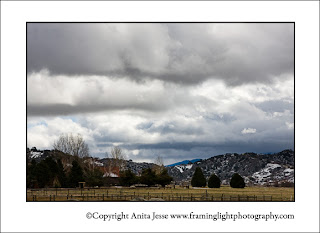
Niels Henrikson (who lives in Canada, by the way, but often posts eloquent descriptions chronicling his visits to family in Norway) frequently produces instructive posts and his latest two are especially noteworthy. The most recent one covers some intriguing ideas for creating masks. I wanted to post a follow-up saying first, “Thanks again, Niels for the lesson”. While I don’t do a great deal of masking lately, when I do need a mask I like to have as many possible tricks up my sleeve as possible. It’s clear to me that there is no such thing as a one-size-fits-all solution to creating masks. Sometimes I have to make several false tries before I hit on the one that works in a particular instance. Niels’ tips are a welcome addition to my bag of tricks.
Secondly, I recently learned something about working with CS3 that has already proven extremely useful, and it fits nicely with Niels’ post. If you import your image from ACR as a Smart Object, you can then create a second layer as a New Smart Object via Copy. Each of these two Smart Objects then has a separate intelligence. In other words, if you double-click on the original layer to return to ACR and make changes in that Smart Object, those changes have no impact on the copy that you created. Then, when you go to the copy or second Smart Object and make new changes in ACR, no changes are produced in the lower original Smart Object. With these two Smart Objects and a mask you are in business.
While I have not been doing much processing in Photoshop lately—I do most of the work in ACR, both of these new techniques are sure to make their way into my workflow on those occasions when a photo could use a little TLC.

Anita, you are always talking about how non-technical you are, but I have no idea what you are talking about! LOL! Smart Objects? I've heard of them, long ago, but have no idea what the heck they are. Now I'll have to go look them up. I feel so non-techy! ;-)
ReplyDeletePaul - You cracked me up. Wow. I feel almost like something approaching smartness—almost. Smart Objects are one of the things that made CS3 worth the upgrade. You are going to have fun. I promise. Most of what I have learned about using them I learned at the NAPP site or Mark Johnson's site. If you don't have Mark's new address, let me know.
ReplyDeleteGee. It's one of those rare occasions where I feel sort of, you know, techie. I had better enjoy this moment.
Even though I use CS3, I have to admit I haven't done much with Smart Objects. I suppose I just haven't realized the potential. So many ways to do things in Photoshop - it's hard to keep track of them all!
ReplyDeleteMark - I agree completely about keeping track of all the tools in Photoshop. I seem to learn a new trick every other week and I know I haven't scratched the surface.
ReplyDeleteBut, once you check into Smart Objects, you will wonder how you got along before. This was one of the main reasons that I finally gave up on Photoshop 7 and upgraded. When I do get into some tweaking of a photo in CS3, the Smart Objects alone speed up my workflow considerably. Try it; you'll like it.